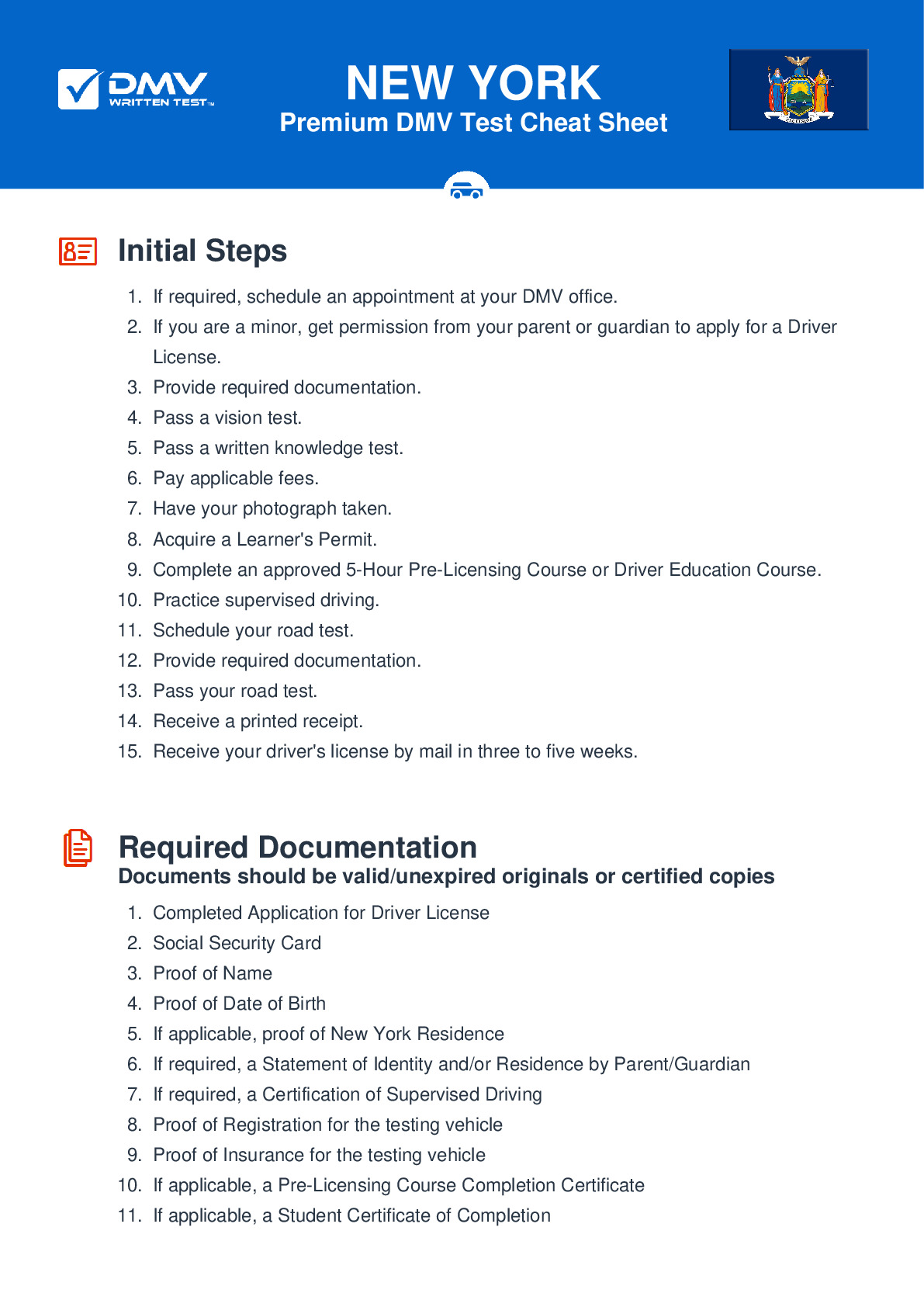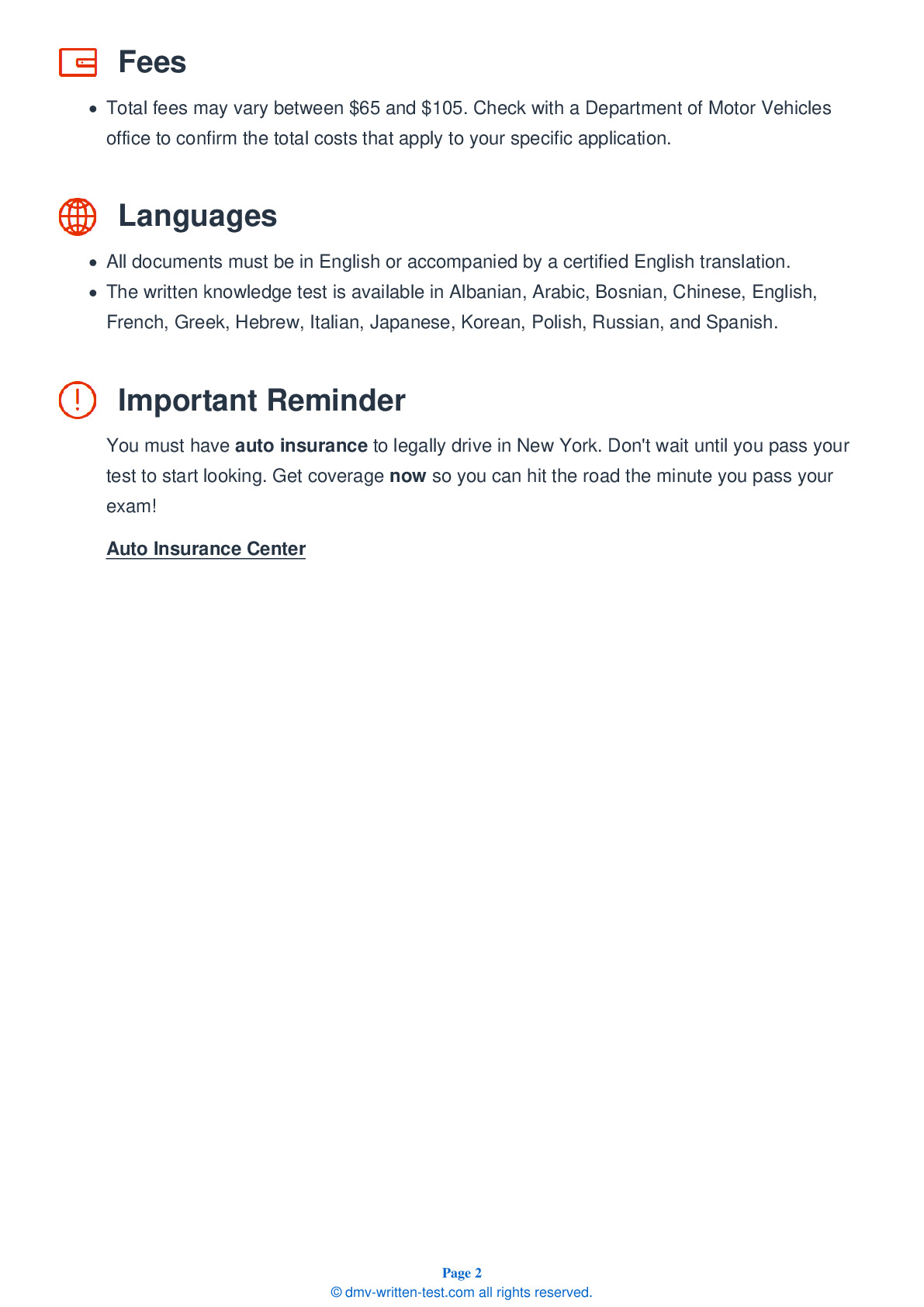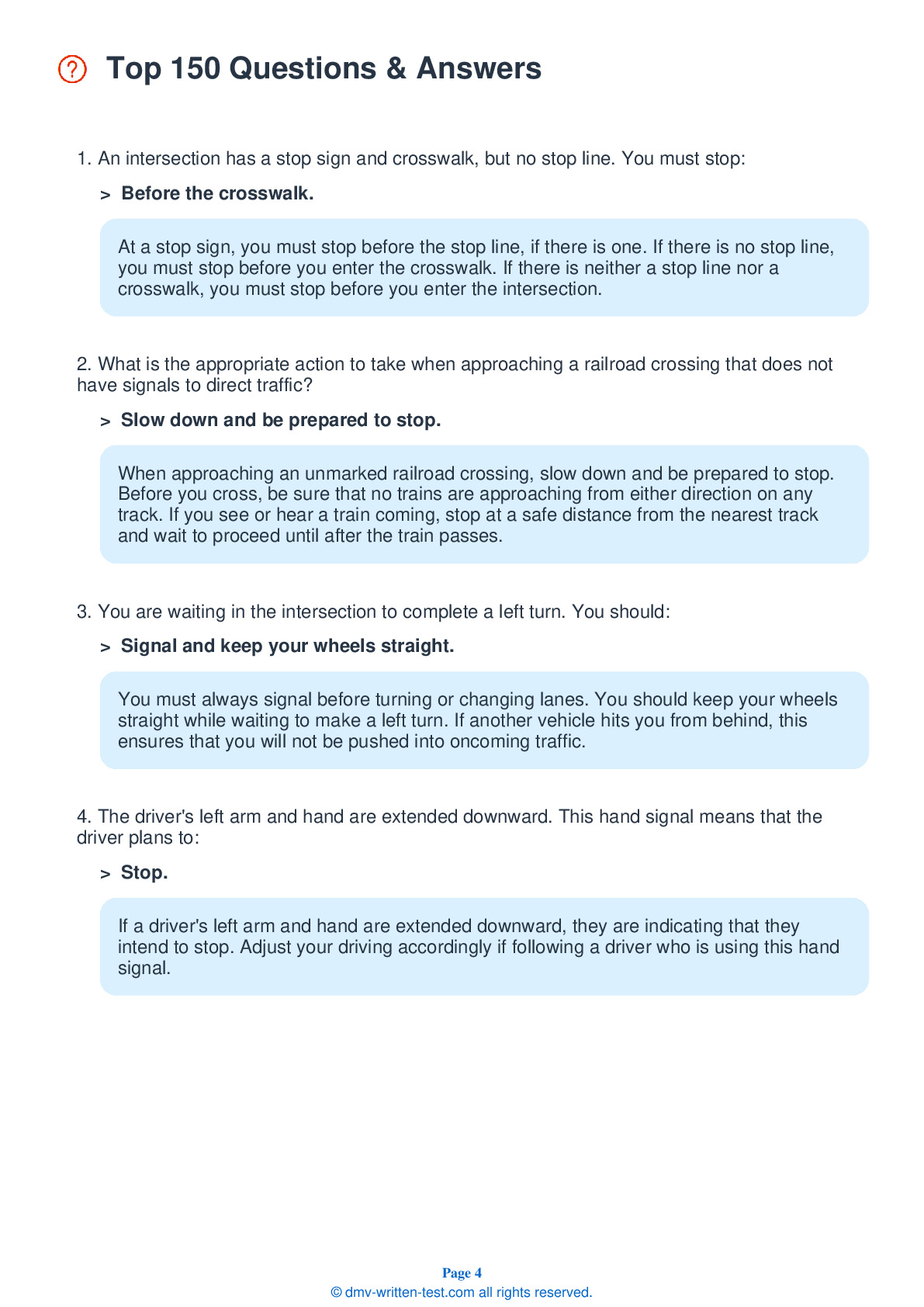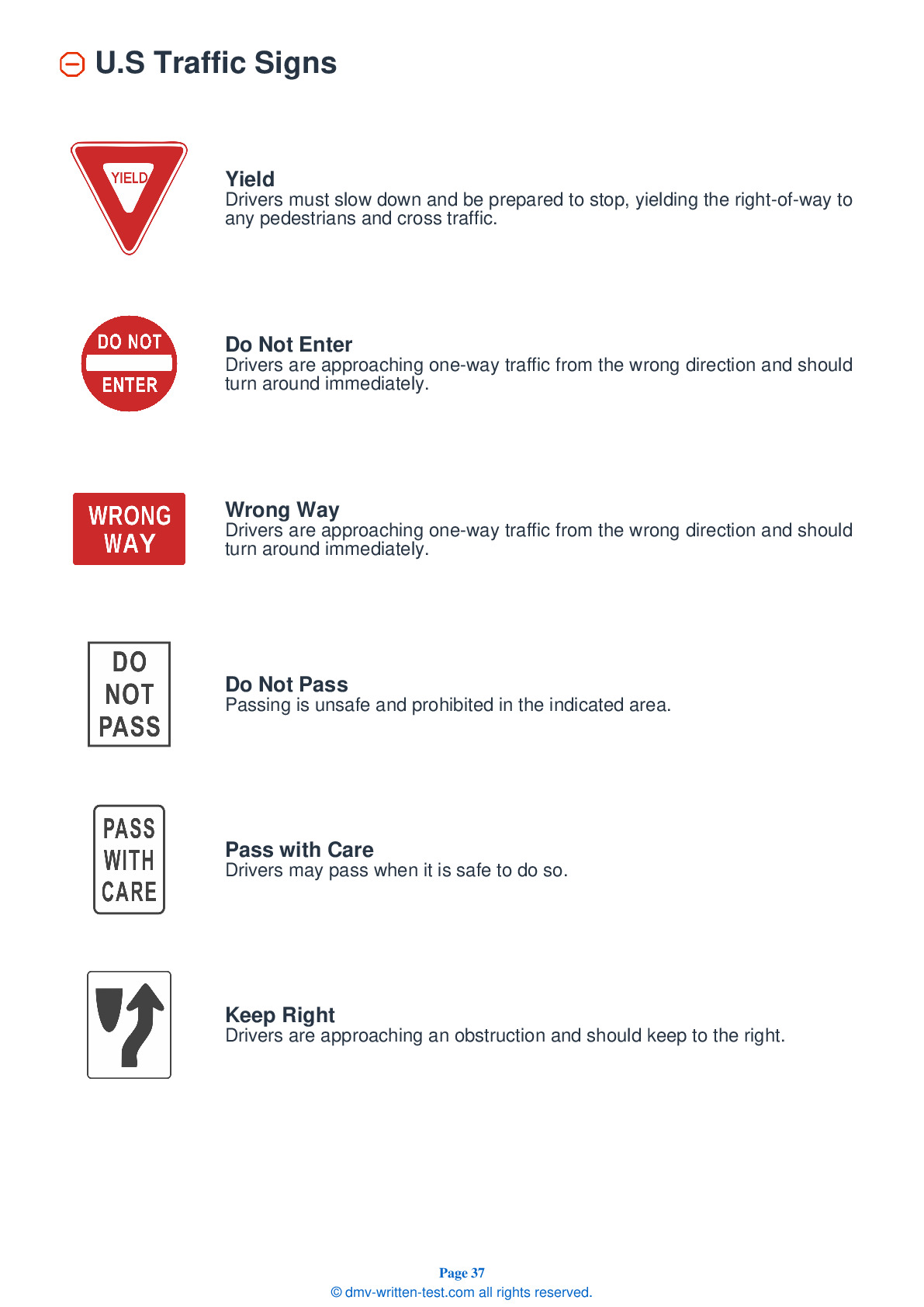2025 New York Permit Test 18
The following questions are from real DMV written tests. These are some of the actual permit questions you will face in New York. Each permit practice test question has three answer choices. Select one answer for each question and select "grade this section." You can find this button at the bottom of the drivers license quiz. For a complete list of questions and answers for New York please visit https://cheat-sheets.dmv-written-test.com/en/new-york/car.
Number of Tests
Number of Question
Passing Score
1. A red and white triangular sign at an intersection means:
Explanation
A triangular red and white yield sign means that you must decrease speed as you approach an intersection and yield the right-of-way to any vehicles or pedestrians in the intersection. You must be prepared to stop if conditions require it.
2. Blood alcohol content (BAC) depends on each of the following, except:
Explanation
Your blood alcohol content (BAC) depends on how much alcohol you drink, how much time passes between drinks, and your weight. It is not affected by the type of alcoholic beverages you drink, your level of physical fitness, or how well you can "hold your liquor."
3. If you are parked parallel to the curb, you may get out of the car on the traffic side only:
Explanation
After parallel parking, you must not open your door if it will interfere with bicyclists or other traffic. Check for traffic before exiting your vehicle.
4. You may drive around the gates at a railroad crossing:
Explanation
You are required to stop at all railroad crossings when signals warn of an approaching train. These signals may include flashing red lights, a lowered crossing gate, a flagger signaling, or a train’s audible signal of warning. Do not attempt to go around a lowered gate.
5. In which of the following situations is passing always forbidden?
Explanation
You must never pass a vehicle that has stopped at a crosswalk to allow a pedestrian to go across.
6. A large truck is ahead of you and is turning right onto a street with two lanes in each direction. The truck:
Explanation
When a vehicle makes a turn, the rear wheels follow a shorter path than the front wheels. The longer the vehicle, the bigger the difference between the paths of the front and rear wheels. Therefore, long trucks often have to swing wide to complete a right turn.
7. If an oncoming driver is heading toward you in your lane, you should:
Explanation




